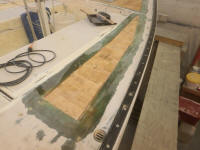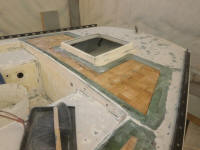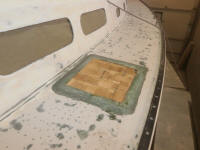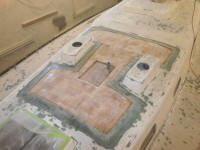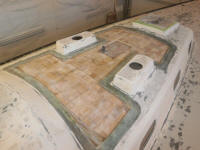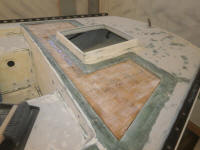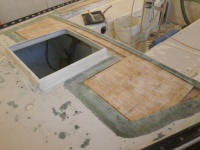
110 Cookson Lane | Whitefield, ME 04353 | 207-232-7600 | tim@lackeysailing.com
Ashantee | Tuesday, January 20, 2015
The first order of business for the day was to remove the weights and plastic covering the new core, clearing the way for the next steps. Afterwards, I did my usual prep and lightly sanded the core surface to scuff the glossy epoxy-coated surfaces.
The coachroof section, in particular around the mast step, required additional work before I could laminate the new top skin, so I started there to get things moving along. I made a paper template, extending out to the edges of the ground interface between old and new, that I'd use to cut the new fiberglass for the top later. I did this now so I could continue working on the mast step and other areas without affecting the ability to make the template.
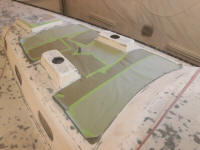
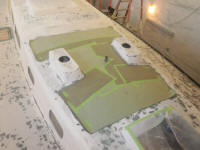
I'd left out the coring in way of the mast step so that I could build up a solid fiberglass, non-compressible structure in this area. Over the course of the day, in three separate lifts a few hours apart, I installed a total of 10 layers of 1708 fiberglass, four at a time to limit heat buildup (two layers in the final lift to bring the surface close to flush with the adjacent 1/2" core).
First 4 layers
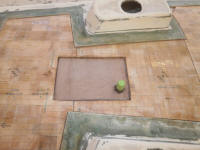
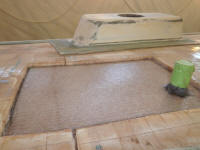
Second 4 layers
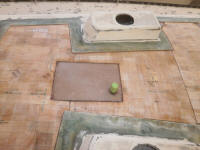
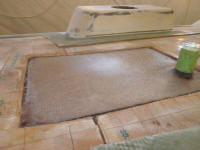
Final 2 layers
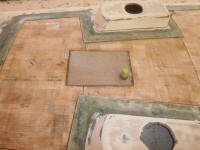
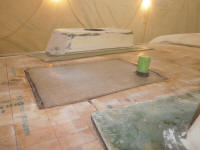
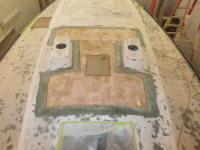
Because of the way the inner deck skin rose to meet the upper skins at the aft corners of the area I'd opened, creating an angled surface, I'd left out the core in those areas. Now, I built up some solid fiberglass to fill most of these voids, leaving this to partially cure before continuing.
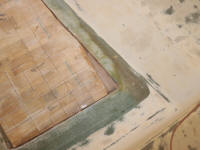
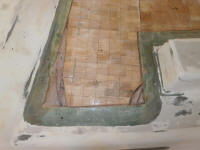
Late in the day, with the solid fiberglass cured past the point of heat production, I installed some thickened epoxy filler to bring these corner areas level with the adjacent core. I'd fill those other gaps at the edges, and the kerfs, later, just before laminating the new material over the top.
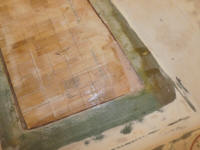
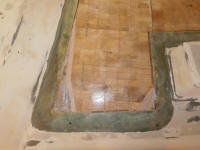
In between the various chores detailed above, I worked on the other sections of the deck repair. The starboard sidedeck and port deck didn't require much in the way of preparatory work, other than a small tapered corner that required filling at the starboard patch, so I used blocks of time to pattern these areas for their new fiberglass skins, and cut out the glass in overlapping layers: 3 layers total for the starboard sidedeck, and 4 for the port side based on the individual requirements of each particular patch. I test-fit the largest layer, which I'd made according to the patterns, to ensure that it fit properly before wetting out any of the material.
Before installing the new top skin laminates, I epoxy-coated the core and filled the kerfs with a thickened epoxy mixture, as well as any small gaps around the edges. Then I wet out and installed the laminations in one operation.
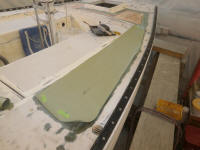
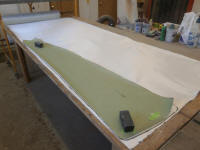
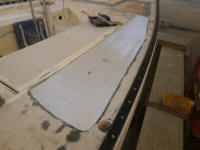
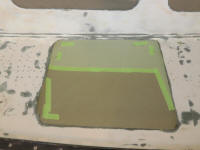
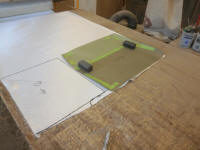
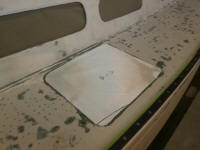

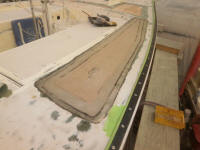
Portions of the poop deck required some underpinning work as well. As with the coachroof, I began with a paper template of the area.
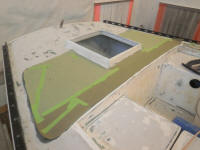
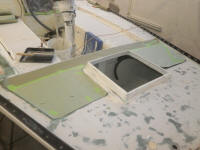
Next, I cut small pieces of fiberglass as needed to fit in the narrow strip through the center of the boat, and at the starboard forward edge, where the skins tapered together and obviated core. I wet out and installed this material in epoxy resin, allowing these areas to partially cure before filling them flush with the adjacent core late in the day.


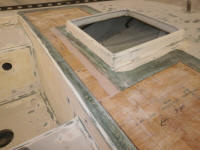
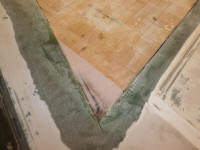
I had just enough time to start laying out and cutting some of the larger pieces of fiberglass required for the coachroof, the first of four layers required there.
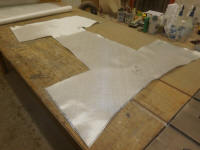
Total Time Billed on This Job Today: 8
Hours
